Over the centuries, writers have described Bridgnorth as the Jewel of the Severn. In 1642, Charles I described the view from Castle Walk as ‘the finest in my kingdom’. Several 18th-century writers compared Bridgnorth with Old Jerusalem, because of its ‘spectacular’ location.
A print and text about the Civil War.
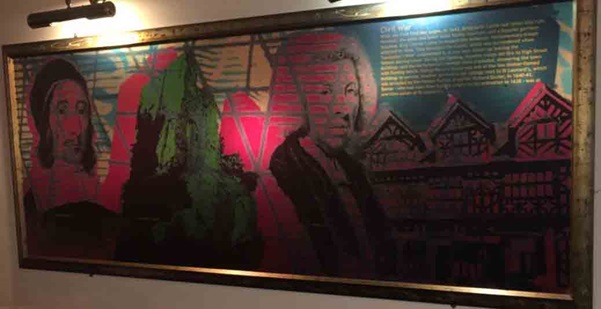
The text reads: When the First Civil War began, in 1642, Bridgnorth Castle had fallen into ruin. However, the gates and tower were hastily repaired, and a Royalist garrison installed. King Charles I came to inspect the defences. Parliamentary troops attacked in 1646. They besieged the castle, which was surrendered when Lavington’s Hole undermined it. It was later blown up leaving the famous leaning tower. During the fighting, Royalist troops set fire to High Street buildings, and the Parliamentary powder store exploded, showering the town with flaming debris. Bishop Percy’s House was one of the few timber framed buildings to survive. Another survival is the cottage next to St Leonard’s, which was occupied by the famous puritan preacher Richard Baxter, in 1640-41. Baxter – who had risen from humble origins to his ordination in 1638 – was at one time curate of St Leonard’s.
Text about Low Town.
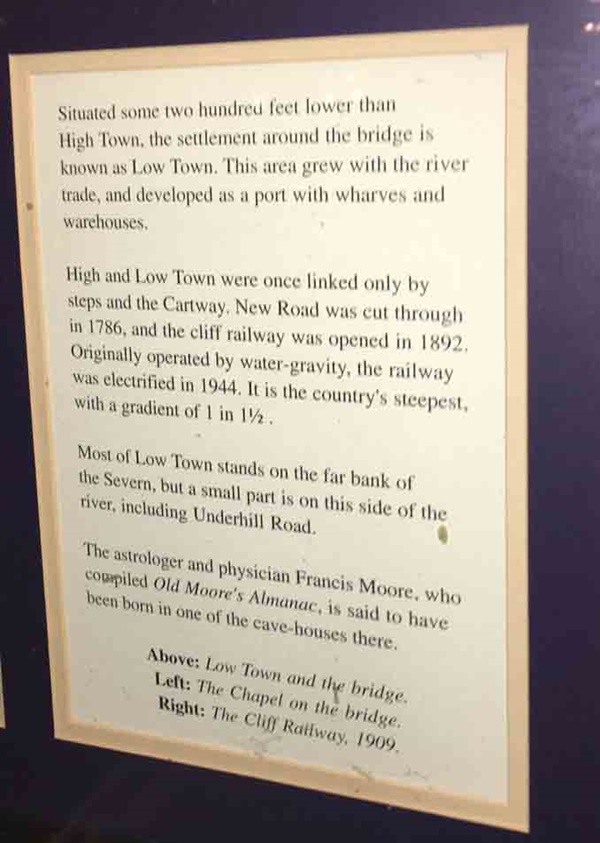
The text reads: Situated some two hundred feet lower than High Town, the settlement around the bridge is known as Low Town. This area grew with the river trade, and developed as a port with wharves and warehouses.
High and Low Town were once linked by steps and the Cartway. New Road was cut through in 1786, and the cliff railway was opened in 1892. Originally operated by water gravity, the railway was electrified in 1944. It is the country’s steepest, with a gradient of 1 in 1½ .
Most of Low Town stands on the far bank of the Severn, but a small part is on this side of the river, including Underhill Road.
The astrologer and physician Francis Moore, who compiled Old Moore’s Almanac, is said to have been born in one of the cave-houses there.
Above: Low Town and the bridge
Left: The chapel on the bridge
Right: The Cliff Railway, 1909.
Prints and text about High Town.
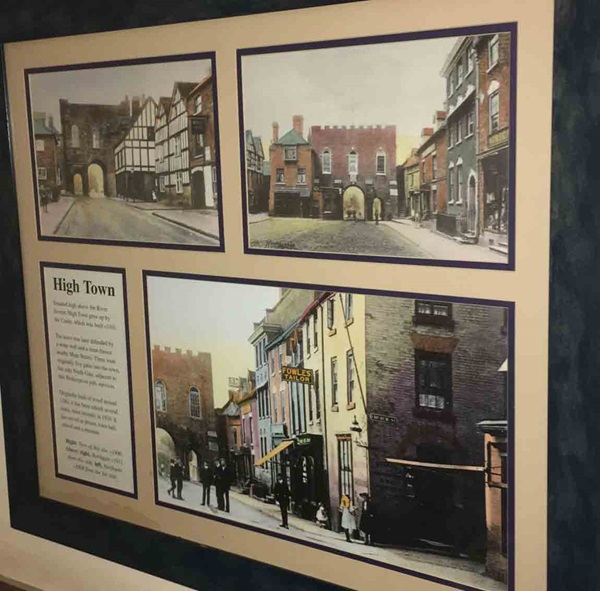
The text reads: Situated high above the River Severn, High Town grew up by the castle, which was built c1101.
The town was later defended by a stone wall and moat (hence nearby moat street). There were originally five gates into town, but only North Gate, adjacent to this Wetherspoon pub, survives.
Originally built of wood around 1260, it has been rebuilt several times, most recently in 1910. It has served as a prison, town hall, school and a museum.
Right: View of this site, c1900
Above: right, Northgate c1911, from this side, left, Northgate c1908 from the far side.
Illustrations and text about trade and industry.
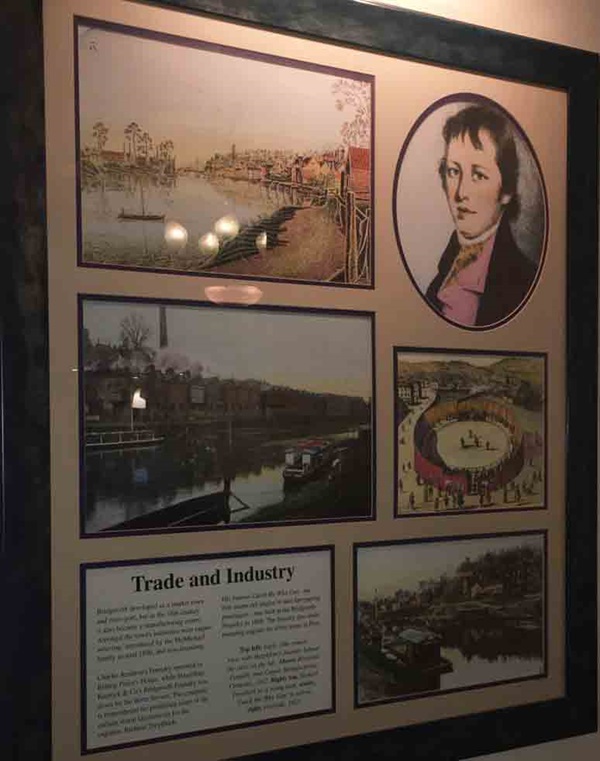
The text reads: Bridgnorth developed as a market town and river-port, but in the 18th century it also became a manufacturing centre. Amongst the town’s industries were carpet-weaving, introduced by the McMichael family around 1800, and iron-founding.
Charles Rushton’s Foundry operated in Bishop Percy’s house, while Hazeldine, Rastrick & Co’s Bridgnorth Foundry was down by the River Severn. The company is remembered for producing some of the earliest steam locomotives for the engineer Richard Trevithick.
His famous Catch Me Who Can - the first steam rail engine to take fare paying passengers – was built at the Bridgnorth Foundry in 1808. The foundry also made pumping engines for silver mines in Peru.
Top left: Early 18th century view with Hazeldine’s foundry behind the trees on the left
Above: Riverside Foundry and Carpet manufacturing company, 1912
Right: top, Richard Trevithick as a young man, centre, Catch Me Who Can in action, right, riverside 1925.
Illustrations and text about the Whitmore family.
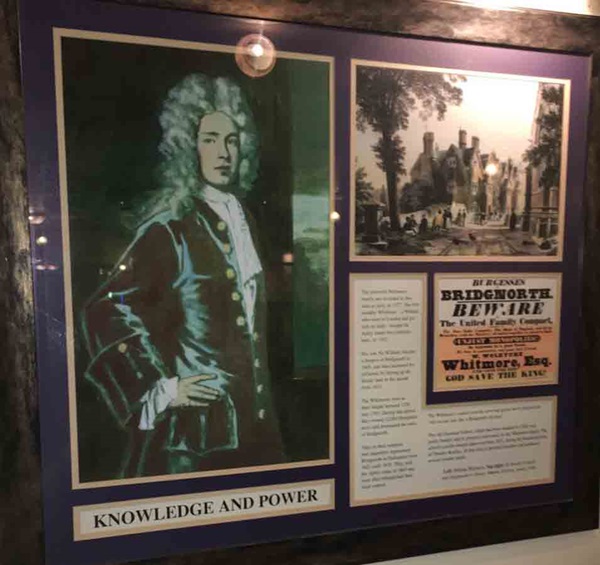
The text reads: The powerful Whitmore family are recorded in this area as early as 1377. The first wealthy Whitmore – a William who went to London and got rich on a trade – bought the Apley estate two centuries later, in 1582.
His son, Sir William, became a burgess of Bridgnorth in 1605, and then increased his influence by buying up the Horde land in the decade from 1614.
The Whitmore’s were at their height between 1754 and 1795. During that period they owned 12,000 Shropshire acres and dominated the town of Bridgnorth.
They or their relations and supporters represented Bridgnorth in Parliament from 1621 until 1870. They sold the Apley estate in 1867 and soon after relinquished their local control.
The Whitmore’s control over the town had given rise to the proverb ‘All on one side like a Bridgnorth election’.
The old grammar school, which had been founded in 1503, was partly funded, and its premises renovated, by the Whitmore family. The school’s profile sharply improved from 1821, during the headmastership of Thomas Rowley. At that time it attracted borders and produced several notable pupils.
Left: William Whitmore
Top right: Dr Rowley’s pupils and headmaster’s house
Above: Election poster, 1830.
Illustrations and text about Thomas Telford.
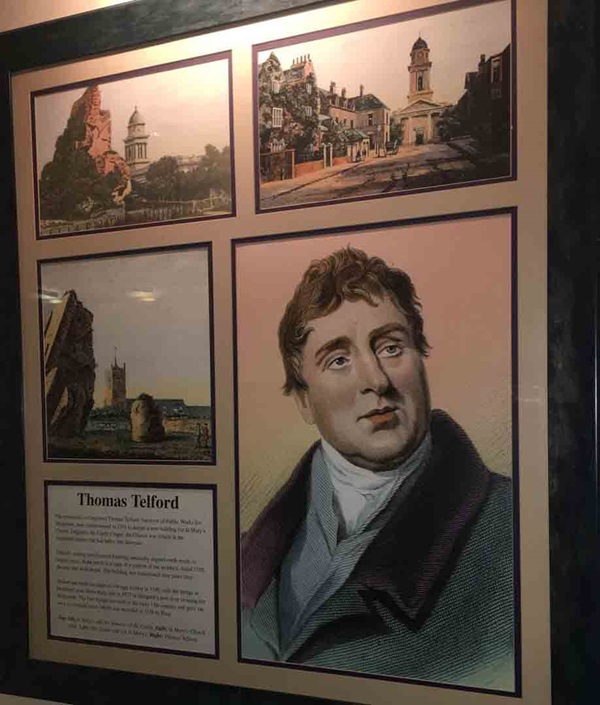
The text reads: The renowned civil engineer Thomas Telford, surveyor of public works for Shropshire, was commissioned in 1791 to design a new building for St Mary’s Church. Originally the Castle Chapel, the church was rebuilt in the fourteenth century but had fallen into disrepair.
Telford’s striking neo-classical building, unusually aligned north-south, is largely intact. In the porch is a copy of a portrait of the architect, dated 1792, the year that work began. The building was consecrated four years later.
Telford had made his name as a bridge-builder in 1790, with the bridge at Montford near Shrewsbury, and in 1823 he designed a new river crossing for Bridgnorth. The first bridge was built in the early 12th century, and gave the town its original name, which was recorded in 1156 as Brug.
Top: left, St Mary’s and the remains of the castle, right, St Mary’s Church c1840
Left: The castle and old St Mary’s
Right: Thomas Telford.
Prints and text about theatre in Bridgnorth.
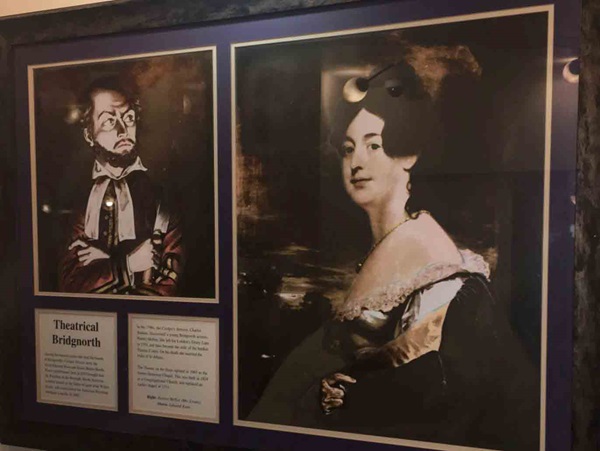
The text reads: Among the famous actors who trod the boards at Bridgnorth’s Cockpit Theatre were the rivals Edmund Kean and Junius Brutus Booth. Kean’s performance here in 1819 brought him the Freedom of the Borough. Booth, however is better known as the father of actor John Wilkes Booth, who assassinated the American president, Abraham Lincoln, in 1865.
In the 1790s, the Cockpit’s director, Charles Stanton, ‘discovered’ a young Bridgnorth actress, Harriet Mellon. She left for London’s Drury Lane in 1795, and later became the wife of the banker Thomas Coutts. On his death she married the Duke of St Albans.
The Theatre on the Steps, opened in 196 in the former Stoneway Chapel. This was built in 1829 as a congregational church, and replaced an earlier chapel of 1711.
Right: Harriet Mellon (Mrs Coutts)
Left: Edmund Kean.
External photograph of the building – main entrance.
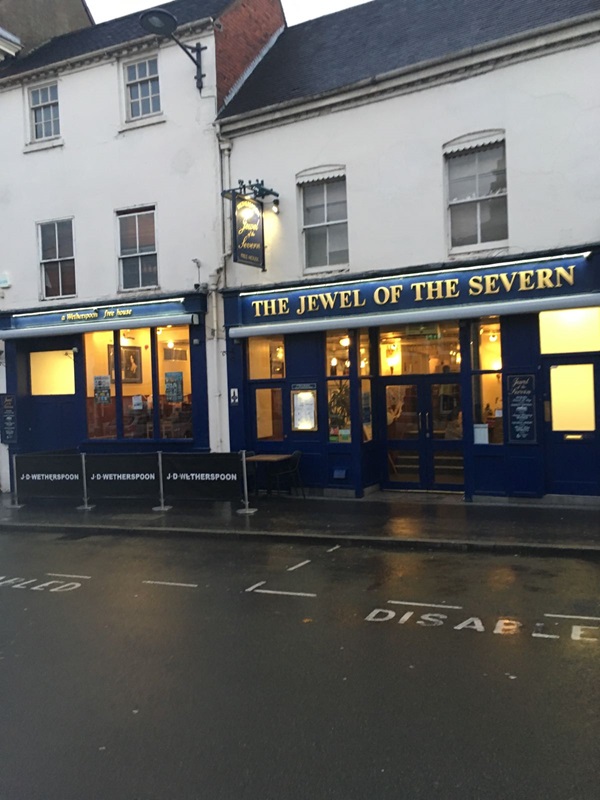
If you have information on the history of this pub, then we’d like you to share it with us. Please e-mail all information to: pubhistories@jdwetherspoon.co.uk